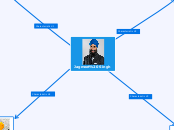によって Sandhu Aman 6年前.
638
Museum Exhibit
Francis Pegahmagabow was an Aboriginal man from Ontario who joined the 1st Canadian Infantry Battalion during World War I. He participated in significant battles like Ypres and Mount Sorrel, where he became renowned for his sniping skills, recording 378 kills and capturing 300 prisoners.









